A rectangle is defined as any rectangular-shaped section of zeros within a 2-d array of 1s and 0s. Typical example:
[
[1, 1, 1, 1, 1, 1, 1, 1, 1],
[1, 1, 1, 1, 1, 1, 1, 1, 0],
[1, 1, 1, 0, 0, 0, 1, 0, 0],
[1, 0, 1, 0, 0, 0, 1, 0, 0],
[1, 0, 1, 1, 1, 1, 1, 1, 1],
[1, 0, 1, 0, 0, 1, 1, 1, 1],
[1, 1, 1, 0, 0, 1, 1, 1, 1],
[1, 1, 1, 1, 1, 1, 1, 1, 1],
]
In this example, there are three such arrays:
My goal is to determine the coordinates (outer 3 extremeties) of each array.
I start by converting the 2-d list into a numpy array:
image_as_np_array = np.array(two_d_list)
I can then get the coordinates of all the zeros thus:
np.argwhere(image_as_np_array == 0)
But this merely provides a shortcut to getting the indices by iterating over each row and calling .index(), then combining with the index of that row within the 2-d list.
I envisage now doing something like removing any element of np.argwhere() (or np.where()) where there is only a single occurrence of a 0 (effectively disregarding any row that cannot form part of a rectangle), and then trying to align contiguous coordinates, but I'm stuck with figuring out how to handle cases where any row may contain part of more than just one single rectangle (as is the case in the 3rd and 4th rows above). Is there a numpy function or functions I can leverage?
